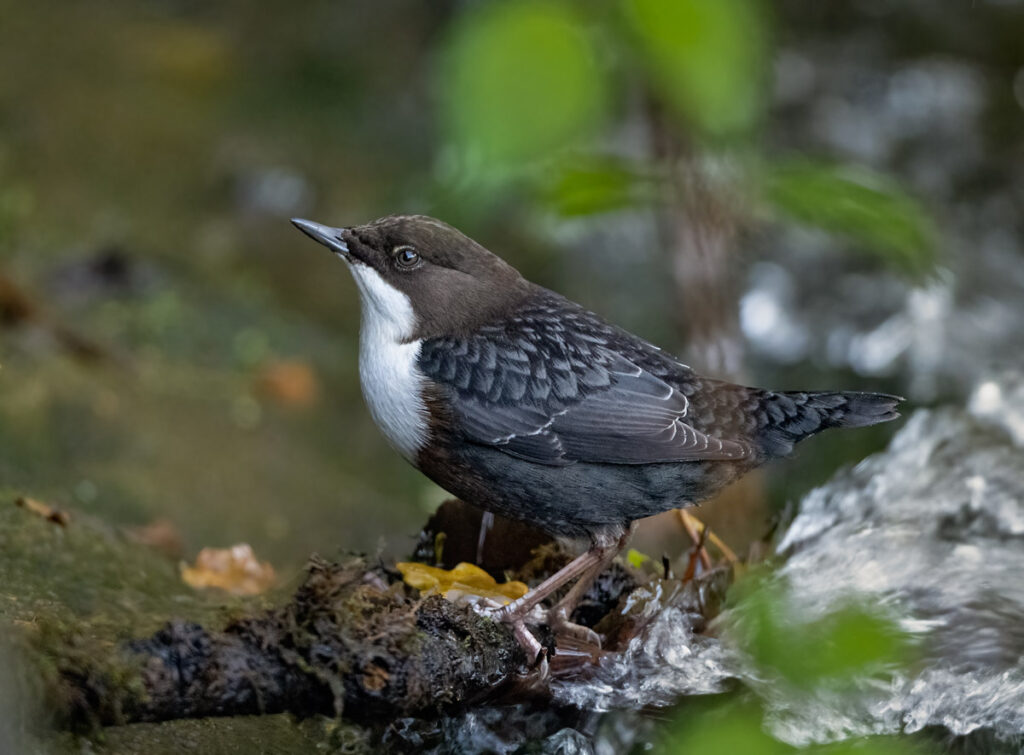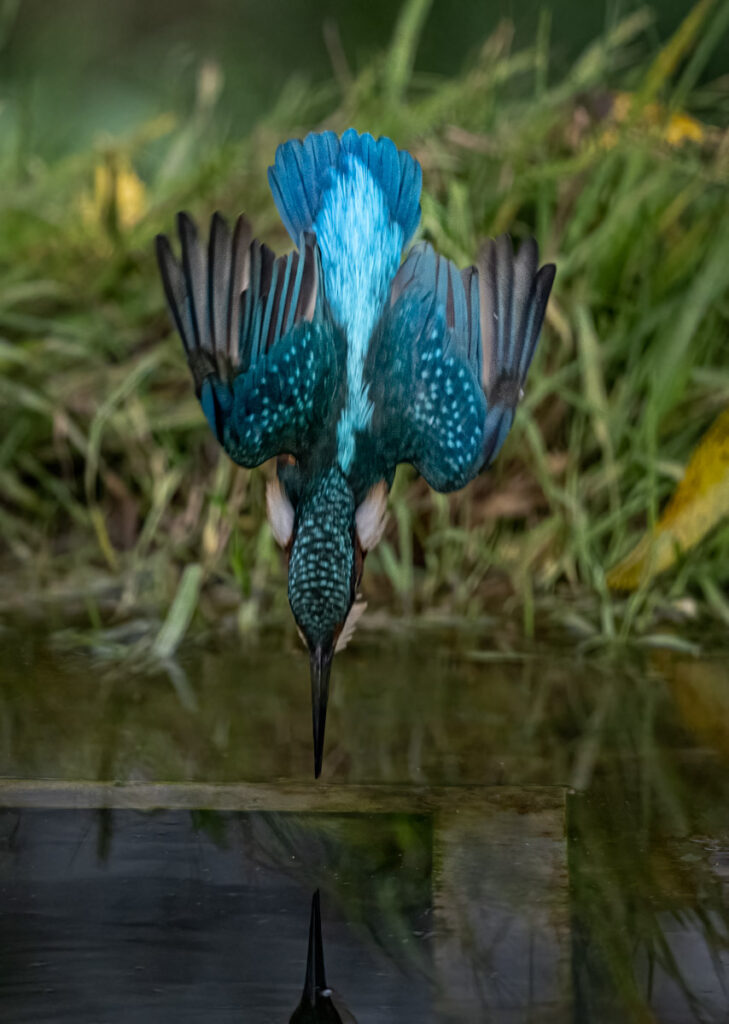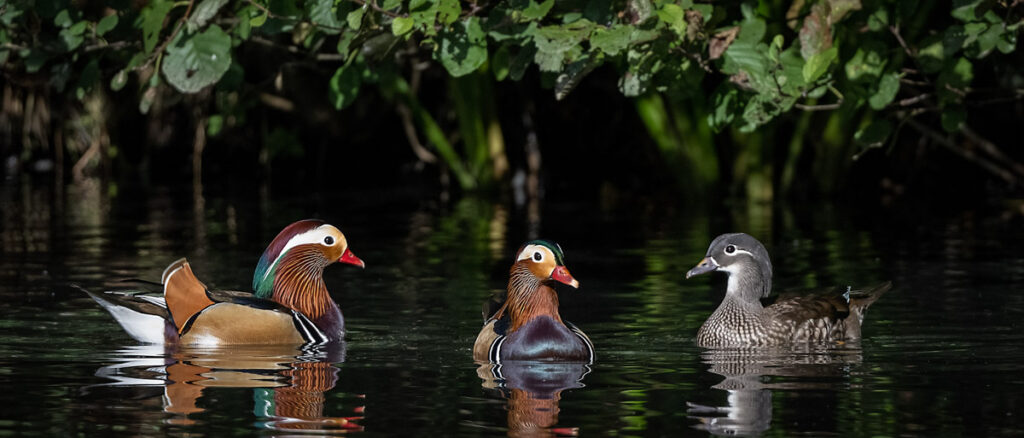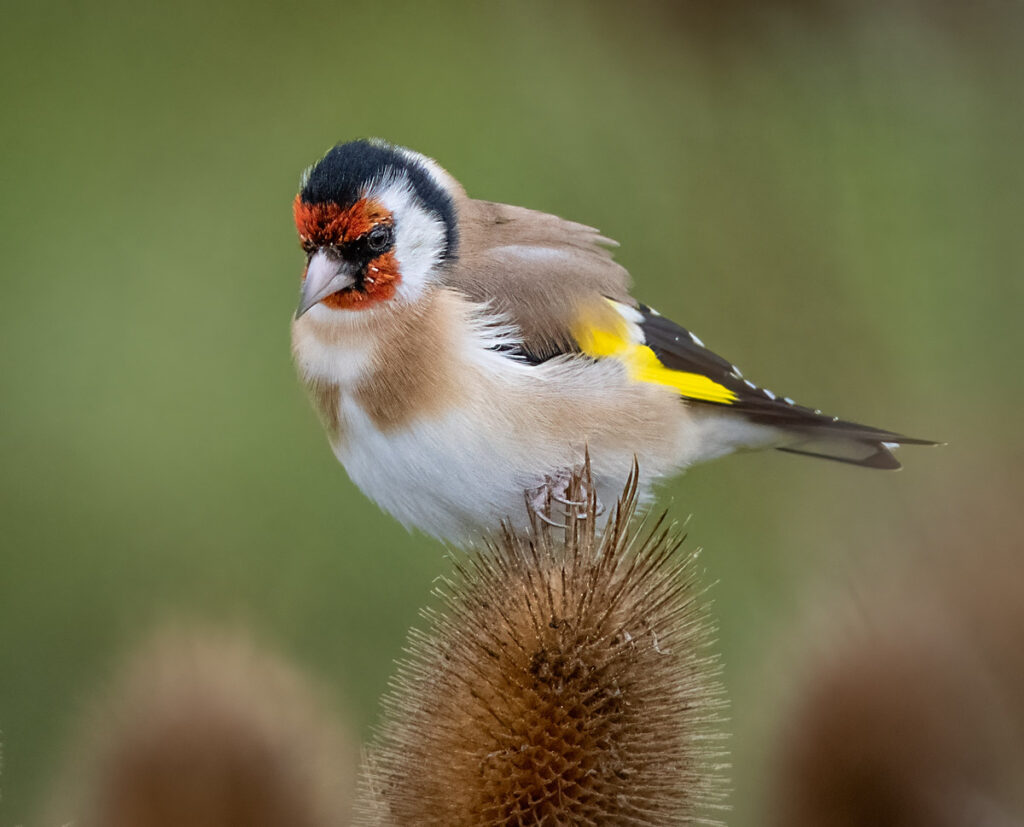
On a recent trip, I encountered many celebrated birds in the United Kingdom. Many associate this island nation with the European robin, so today we’re showcasing a few more that I was fortunate to see alongside our gardener’s friend.

The crystal-clear waters of the UK provide the perfect habitat for many species. Look towards partially submerged rocks, you may catch the sudden flash of a pristine white bib on a dark brown bird. The white-throated dipper is a songbird different from all other Passerines – like its North American cousin, it is the only aquatic member of that vast order. This Old-World dipper has a rich chocolate plumage, thrown into contrast by a broad, snow-white neck and chest.

What makes this bird unique is how it navigates its watery world, expertly swimming and walking underwater, in some of the very turbulent conditions. Named after the bobbing motion when out of water, these birds will plunge or walk into water to find food with stunning aptitude. Their strong long-toed feet hook onto the riverbed, propelling themselves forward step by step, seeking out prey. Aiding this endeavor is another adaptation; a third, transparent eyelid called a ‘nictitating membrane’ that helps them see underwater. Their deft swimming as they hunt is reminiscent of those other masters of underwater flight, the penguins. White-throated dippers are truly beautiful birds perfectly at home in their environment.

If you are lucky enough, you may also see another river bird living alongside the dipper – the Common or Eurasian kingfisher. This bird is a marvel, and everyone who spots one feels special. That azure, turquoise and petrol blue head, wings, back and tail offset by a deep orange chest and belly is a photographer’s gift; many will spend hours waiting for that moment as they enter the water in a straight dive, the dagger-like bill reflected in the still water before piercing the surface. Kingfishers are important indicators of waterway health; you won’t find one near murky rivers. Whilst listed as Least Concern, numbers are sadly in decline as pollution hits this species hard, and human proximity can cause them to abandon nests; there’s a reason why this bird is so elusive.
As the water’s flow decelerates, we enter the world of freshwater lakes. These habitats provide a serene backdrop for many sights, including one of the world’s most watchable courtship displays.

The great crested grebe, the largest of the grebe family is a formidable pursuit diver, chasing prey through underwater forests and across the flat plains of their aquatic world. It lives up to its name in the breeding season, with magnificent head and neck plumage of vibrant oranges and deep browns atop a slender white neck.
In spring, their courtship display captivates. Calling across the water, each bird swims back and forth until the moment when they directly approach and start “dancing” – a series of elaborate head bobs and shakes, showing off their crests. This continues for several minutes, and then, the showstopper: the weed dance. They dive into the water, resurfacing a little apart, carrying a clump of weed in their beaks. They then rush headlong towards each other – just when you think they’re about to collide, they pull up short, rear into the air, and paddle furiously to stay afloat. Turning their heads side to side, weed still in their bills, they push their chests together. This lasts a few seconds; once over, the relationship is confirmed.

I saw other popular UK birds: as the weed dance takes center stage, in the wings beneath overhanging trees you may glimpse the astonishing Mandarin duck. As the name suggests, this bird originated in China, but stunned by their ornate plumage, private collectors brought them to the UK to indicate wealth. Inevitably, many escaped the gardens of the rich, and now there are around 4,500 breeding pairs in the UK.

I must mention one of the nation’s most beloved garden birds, a frequent and rowdy sight at feeders, the European goldfinch. Like the American goldfinch, yellow and black feathers are on display, but here that bright golden wing bar and the white spots and bars on black wings and tail give the impression this bird is dressed up for some exclusive event. Everyone loves a masked ball; that red and white face, capped off by a jet-black crown and nape is perfection. To complete the array of colors, the chestnut body and cream underparts make this small finch something wonderful to see.


